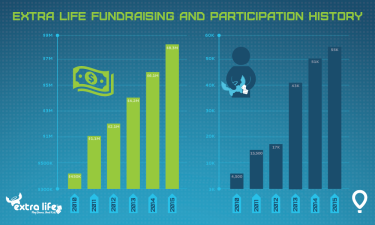
Video games and those who animatedly play, gamers, are often depicted in a negative manner. To this day the stereotypical image of a gamer hangs in the hearts of many Americans. However, the days of that socially awkward, pale, slightly overweight kid playing video games in his parents’ basement are long gone.
Presently, almost half (49 percent) of American adults play video games. Of this 49 percent, 10 percent would call themselves gamers. Fifty percent are males and 48 percent are females.
With the advancements in modern-day technology, video games have never lagged far behind. Video games can now be played virtually anywhere from console games to even mobile games. With these advancements practically anyone can play at any given time.
Yet, with the numbers so high when it comes to playing video games, why is there still such a prevalent negative outlook on the gaming community?
Over a quarter of the adult-American population sees video games as an utter waste of time. Additionally, 40 percent still believe there is a direct correlation between video games and real-world violence.
Although gamers are often persecuted in this way, they cease to prevail the age-old stereotype.
The gaming community does much more than sit around playing video games for hours on end. Multiple times a year the community comes together to benefit something much larger than video games. This is done through an organization called Extra Life.
Extra Life calls upon gaming community to raise money for sick and injured children. This is done through the pairing of one of the 170 Children’s Miracle Network Hospitals nationwide.
While Extra Life is a fundraiser that runs all year, there is one major event that many of the gaming community look forward to all year: the 24-hour marathon stream. This year’s community stream will be held on Nov. 5, with a slight twist. Since the community event crosses daylight savings, this year’s event will actually run for 25 hours.
Extra Life was created in 2008 by Jeromy Adams. He was inspired by one girl’s four-year battle with leukemia. Adams and Victoria Enmon had become very close over the course of her battle with leukemia. The two met during one of Adams’ radiothons in Houston, Texas.
Through one of Adams and Enmon’s conversations, Adams learned that Enmon loved to play video games. Adams reached out to the gaming community who ended up donating thousands of games for Enmon, who later gifted them to other children in the hospital.
After Enmon’s death in 2008, Adams committed his full time to continuing Enmon’s legacy with the fundraiser he named Extra Life. Through Extra Life, Adams and the gaming community are able to honor Enmon year after year.

In the inaugural year of Extra Life, 1,200 gamers came out to raise money. Over the next eight years, the numbers would rise an exorbitant amount.
According to Cody Burket a support technician for Children’s Miracle Network Hospitals, the numbers had risen to 4,500 gamers who raised $450,000 in 2010 to 55,000 gamers who raised $8.3 million in 2015 alone.
“A lot of people are hesitant to donate to charities like this because they are worried about how much of the donations goes to the cause,” Burket said. “100 percent of the donations we recieve go directly to the hospital the participant is supporting. All our administrative costs are covered by funds we receive from our partner companies.” These partners include Twitch, Humble Bundle, Reddit, Rooster Teeth, Trion Worlds, kbmod.com, Wizards of the Coast, XSplit, Entertainment Software Associates and Ubisoft.
While the majority of the money is raised by peer-to-peer donations, Burket noted some outside companies donate to the cause as well. “We also receive many generous matching donations each year for companies that our participants work for.”
Members of the gaming community form teams to raise money for their local Children’s Miracle Network Hospital. Funds donated to each children’s hospital are used in a variety of ways. Some hospitals use the funds to expand on areas of the hospital while others use the donations to further advance their technology and treatment options.
“There are literally hundreds of games that get played,” Burket said. “I would say the most popular tend to be multiplayer games so that participants are able to play together.”
Burket also emphasized the wide variety when it comes to the style of games. “Participants aren’t even limited to just video games,” Burket said. “We have tons of events that cover things like tabletop games, card games, arcade games and many other types.”
If interested in getting involved, there is still time to register or join a team for this year’s Extra Life event. To register visit www.extra-life.org. Burket added for everyone to watch this video to learn more in depth Extra Life’s history. Anyone is welcome to join the event and raise money to help heal sick children.
There is no particular goal Extra Life is aiming to hit this year. The only goal is to continue raising awareness for local Children’s Miracle Network Hospitals. “We just want to keep being bigger and better than the year before.”


